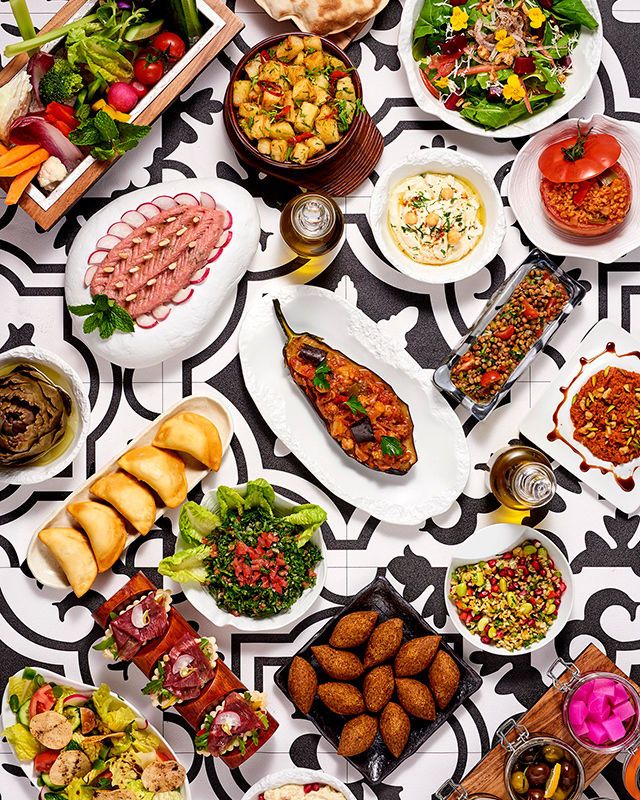A Parent’s Guide to Lebanese Restaurants: Family-Friendly Tips and Tricks
Hey there, culinarily curious parents! Welcome to the world of Lebanese cuisine, where the flavors burst with a blend of the Mediterranean and Middle Eastern wonders. Planning a family meal-out and want to try something incredibly flavorful and wholesomely nutritious? You’ll love the family-friendly atmosphere and diverse selections offered by Lebanese restaurants—a great choice for both little taste buds and adult palettes alike.
But wait, are you wondering how kid-friendly Lebanese food can be? Worry not, dear parent! This handy guide is going to walk you through everything you need to know to ensure a joyful and delicious dining experience for all ages. Ready to dive into the delightful world of hummus, falafel, and kebabs? Let’s go!
Why Lebanese Cuisine is A Great Choice for Families
Lebanese cuisine is not just delightful to the taste, but also a treasure trove of nutritional benefits that are perfect for growing bodies. It’s a cuisine that emphasizes fresh vegetables, lean proteins, whole grains, and heart-healthy fats. Importantly, generous use of herbs and spices means flavor without unnecessary additives—making meals both scrumptious and wholesome.
Exploring the Menu: Kid-Friendly Lebanese Dishes
No two Lebanese restaurants are exactly the same, but you’re bound to find some universally kid-friendly options. Let’s take a look at some of the dishes that might become your child’s next favorite:
- Hummus: This creamy blend of chickpeas, tahini, lemon, and garlic is not just tasty; it’s also a hit with kids! Perfect for little fingers to dip with veggies or pita bread.
- Falafel: These fried chickpea fritters are crispy on the outside and soft on the inside. They’re a fun finger food that kids can enjoy on their own or inside a wrap.
- Grilled Kebabs: Grilled meat or vegetables on a stick—what could be more exciting for a child? Chicken and beef kebabs are often a big hit with the smaller crowd.
- Rice Pilaf: A flavorful and comforting dish, rice pilaf is a gentle introduction to Lebanese flavors for those less adventurous young eaters.
- Manakish: Often dubbed as ‘Lebanese pizza,’ manakish topped with za’atar (a mixture of herbs, sesame seeds, and sumac) offers a familiar but unique flavor that’s an absolute treat.
If you’re feeling a little hesitant about how your kiddos will react to new flavors, these dishes are a great starting point. And remember, part of the fun is exploring new tastes together as a family!
Navigating the Experience: Practical Tips for Parents
Now, I’m sure you’re excited to get going, but there are a couple of things to keep in mind to ensure a smooth and enjoyable experience. Here are some practical tips:
- Call Ahead: If you’ve selected a restaurant, give them a ring to ensure they have a family-friendly setting. High chairs, a children’s menu, or a welcoming attitude towards children are major pluses.
- Meal Times: Kids can be a little less patient when hungry. Timing the meal appropriately, perhaps by going a little earlier than the usual rush hours, can make all the difference.
- Explain the Cuisine: Get your children excited by talking about the restaurant and its offerings beforehand. Showing pictures or highlighting similarities to food they already love can amp up the anticipation.
Embracing the cultural experience is part of the excitement of trying Lebanese cuisine. It’s more than just a meal; it’s an opportunity for your children to explore the world from the comfort of their dinner plates. With a dash of adventure and a sprinkle of knowledge, your family’s Lebanese dining experience is set to be an unforgettable journey of flavors!
Continuing on our flavorful journey, let’s delve deeper into what makes Lebanese dining an exceptional choice for families. Stay tuned for more on cultural etiquette, restaurant recommendations, and how to turn Lebanese dining into an educational experience for your young ones!

5 Things Parents Should Know in Preparing for Lebanese Restaurants
Walking into a Lebanese restaurant is like stepping into a realm where colors, aromas, and tastes combine to create a truly unique dining setting. Let’s make sure you’re armed with everything you need to turn Lebanese dining into a family night to remember!
-
Understanding the Layout and Service Style
A traditional Lebanese meal often revolves around ‘mezze,’ which are small dishes that are perfect for sharing. It’s a wonderful way to introduce choice and variety. Kids can have a nibble of this and a little of that, making it a playful, interactive meal. Generally, service in Lebanese restaurants is warm and inviting, so feel comfortable asking questions or for recommendations to suit your family’s taste.
-
Distinguishing Dietary Preferences or Restrictions
Whether you have a picky eater, a dietary restriction, or a food allergy in the family, Lebanese menus are often accommodating. There’s a beneficial emphasis on plants, with many vegetarian and vegan options. Don’t hesitate to discuss your needs with the staff; they can point you towards suitable dishes, such as gluten-free or nut-free options.
-
Preparing for the Spice Spectrum
Some Lebanese dishes may be spicier or more heavily seasoned than your kids are used to. It’s worth getting to know the spicier items so you can make informed choices for your little ones. Remember that not all spices equate to heat, and often they simply offer a new flavor profile that can be quite delightful to young palates.
-
Pack Some Entertainment
While many Lebanese dishes are served relatively quickly, particularly the mezze, it’s always a good practice to have some entertainment on hand if there are unexpected waits. A small coloring book, a pack of cards, or a quiet toy can go a long way in avoiding restlessness at the table.
-
Exploring Cultural Etiquette
Introduce your children to the cultural norms and etiquette associated with Lebanese dining. This can involve simple gestures like saying “please” and “thank you” in Arabic (‘min fadlak’ and ‘shukran’) or learning how to use flatbread as a utensil to scoop up food – a fun and immersive experience for kids!
By being prepared and mindful of these aspects, you’ll set the stage for a family meal that’s not only delicious but also culturally enriching. Lebanese restaurants are typically family-centric environments, so don’t be surprised if they go an extra mile to make your little ones smile. And who knows, your family’s Lebanese dining outing might just inspire a newfound interest in cooking and spices back at home!
Turning Lebanese Dining into an Educational Experience
Family outings are always great opportunities for learning, and dining at a Lebanese restaurant is no exception. From geography to language, and even math while divvying up portions, the learning possibilities are as bountiful as the menu options. Emphasize the origin of dishes, discuss traditional cooking methods, or let the kids help in paying and understanding the bill to sneak in a quick math lesson.
With all these insights and preparations in hand, dear parents, you and your family are ready to embark on a sensory adventure at your local Lebanese eatery. Relish the moments of family bond and culinary exploration, and watch as the dinner table turns into a playground of tasty, educational delight!
For more great articles please see here. For more information see here
Disclaimer
The articles available via our website provide general information only and we strongly urge readers to exercise caution and conduct their own thorough research and fact-checking. The information presented should not be taken as absolute truth, and, to the maximum extent permitted by law, we will not be held liable for any inaccuracies or errors in the content. It is essential for individuals to independently verify and validate the information before making any decisions or taking any actions based on the articles.




